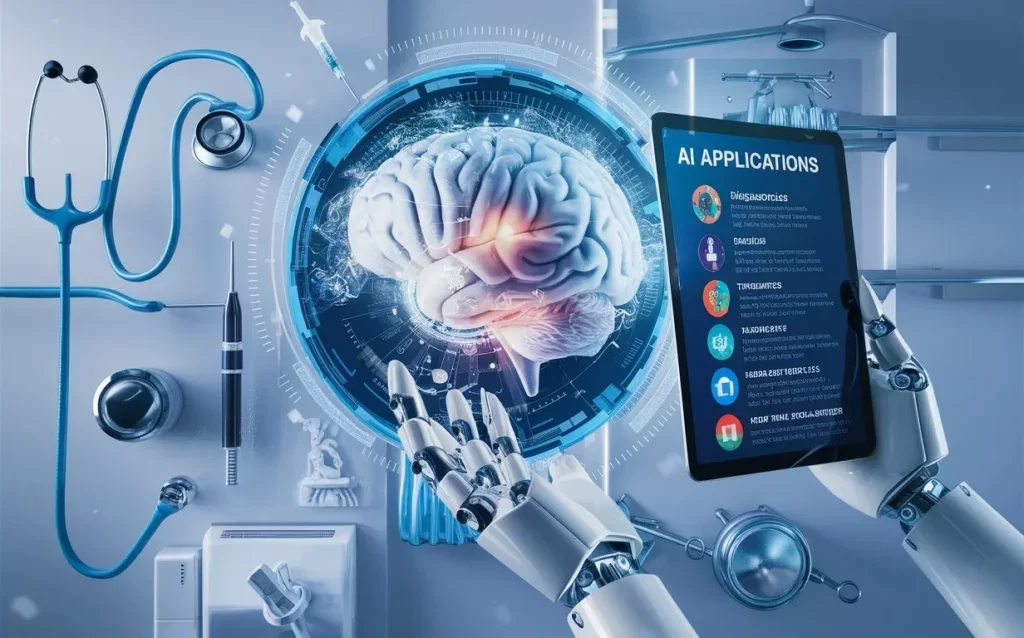AI in Predicting and Diagnosing Diseases: Revolutionizing Healthcare

Artificial Intelligence (AI) is increasingly becoming a cornerstone of modern healthcare. One of the most transformative applications is in the realm of disease prediction and diagnosis. As AI models are trained on massive datasets, they are learning to predict winrating diseases with a level of accuracy that rivals (and sometimes surpasses) human experts. But how exactly is this technology reshaping healthcare? Let’s dive into how AI is helping us detect and diagnose diseases earlier, with greater precision, and at lower costs.
The Power of Data in Healthcare
AI’s ability to predict and diagnose diseases comes from its capacity to process vast amounts of data. Traditionally, medical diagnoses rely heavily on a combination of clinical tests, medical history, and the expertise of healthcare professionals. But AI takes this one step further by leveraging machine learning (ML) algorithms that can analyze thousands of data points quickly and accurately.
These algorithms “learn” from data, such as medical images, genetic information, electronic health records (EHRs), and even wearable devices that track a patient’s daily health metrics. This wealth of data enables AI systems to identify patterns that may be too subtle or complex for human eyes to see.
AI in Early Disease Detection
Early detection of diseases like cancer, heart disease, diabetes, and neurological disorders can significantly improve patient outcomes. AI has been shown to excel in identifying potential risk factors even before symptoms appear. Here’s how:
- Cancer Detection: AI has demonstrated immense potential in detecting cancers, particularly breast, skin, and lung cancer. By analyzing medical imaging such as X-rays, MRIs, and CT scans, AI algorithms can flag potentially malignant areas with a level of sensitivity comparable to, or even greater than, human radiologists. For example, AI can identify tumors in mammograms years before a human would detect them.
- Cardiovascular Diseases: AI can predict the likelihood of heart disease by analyzing a patient’s blood pressure, cholesterol levels, and lifestyle habits. Some AI models can detect early signs of heart failure from EHR data or even predict the risk of a heart attack.
- Neurological Disorders: AI is being used to identify early signs of diseases like Alzheimer’s and Parkinson’s. It can analyze changes in speech patterns, facial expressions, and brain scans to detect cognitive decline before traditional methods.
The Role of AI in Diagnosis
When it comes to diagnosing diseases, AI’s contributions go beyond just pattern recognition. Some AI systems are able to help doctors make more accurate and efficient diagnoses. IBM Watson Health, for example, has been used to support oncologists in making evidence-based treatment decisions by analyzing patient records and the latest research.
Moreover, AI is playing an increasingly critical role in personalized medicine. By analyzing a patient’s genetic data, AI can suggest targeted treatments based on how that individual’s body is likely to respond to specific drugs, thus optimizing treatment plans.
AI and its Advantages Over Traditional Methods
While AI cannot replace human doctors, it complements their work by providing insights that might otherwise be overlooked. Some key benefits of AI in healthcare include:
- Speed: AI systems can analyze large datasets in a fraction of the time it takes a human to do so.
- Accuracy: With continuous training on diverse datasets, AI can achieve higher diagnostic accuracy, reducing the chances of human error.
- Scalability: AI can be deployed in resource-limited settings, helping provide diagnostic support where healthcare expertise may be lacking.
- Cost-Effectiveness: Early diagnosis and prediction often mean lower treatment costs and better patient outcomes, potentially reducing overall healthcare expenditures.
Challenges and the Future of AI in Healthcare
Despite its promising potential, AI in healthcare is not without its challenges. Data privacy and security remain significant concerns, as patient data must be handled with extreme care. Additionally, ensuring AI algorithms are free from bias is a major issue, as biased data can lead to incorrect diagnoses, especially in underrepresented populations.
Moreover, AI models require continuous monitoring and updating to stay relevant, and there is still the challenge of gaining full trust from the healthcare community. As these challenges are addressed, the future of AI in healthcare looks incredibly promising.
Conclusion
AI is transforming the landscape of disease prediction and diagnosis. With its ability to analyze massive datasets and identify subtle patterns, it holds the potential to save lives by detecting diseases earlier and more accurately. As the technology continues to evolve, we can expect AI to play an even more significant role in the future of healthcare, improving patient outcomes, enhancing efficiency, and reducing costs.
The Rise of Artificial Intelligence: What’s Next for 2024?